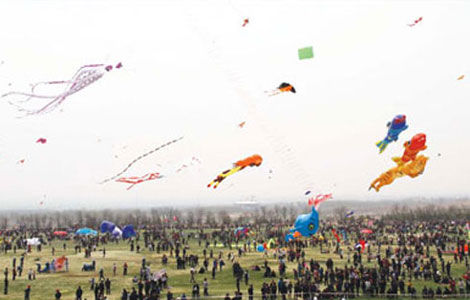Op-Ed Contributors
Court cases indicate better IPR protection
Updated: 2011-04-29 07:56
By Haifeng Huang and Tony Chen (China Daily)
In line with this judicial activism, it appears that the courts in China have made, or are making, a number of significant changes or reforms in the field of IPR litigation:
First, the courts have taken a number of measures in order to increase transparency. For example, the Supreme People's Court is taking a leading role in establishing and operating a website publicizing IPR-related judgments. By end of 2010, over 41,696 court judgments had been published on this website. This is not the case with the decisions from the administrative agencies - most of which are not publicly available, and sometimes not even available to the IPR owners.
Second, the conventional wisdom is that the awards for damages are relatively low for such cases in China. However, things are slowly changing. The Supreme People's Court has emphasized more than once in its policy guidelines that the damages should be awarded under a "full compensation principle", rather than requiring stringent proof of losses. Significant damages have been awarded in more and more cases in recent years, for example, $21 million in the Schneider case, $3.1 million for the Neoplan patent case, and $1.25 million for a Yamaha trademark infringement.
Third, applications for preliminary measures, including evidence preservation, assets preservation, and preliminary injunctions, are frequently granted. For example, in 2010 there were 294 cases that requested pre-suit evidence preservation and 97.46 percent of the applications were granted. It will be interesting to see if parties will be more willing to seek this.
Fourth, mediation has been incorporated as part of the trial process and in each case the parties are asked if they are willing to mediate. In 2010, about 66.76 percent of cases before the court of first instance were resolved through mediation, according to the White Paper.
Fifth, IPR cases were previously handled by different court chambers: the civil chamber for civil cases, the administrative chamber for administrative cases, and the criminal chamber for criminal cases. However, courts in China have recently started to reform the system by centralizing all IPR cases within one specialized chamber. By the end of 2010, 5 high courts, 49 intermediate courts, and 42 basic courts had implemented the centralization plan. The effects remain to be seen, but centralization is likely to give judges more time to keep up with new IPR issues and the responsibility for faster and more predicable decision making.
However, there are also concerns over these changes. In the past, the courts have been misused by some parties in China to obtain extra-legal effects, for example fabricating cases to create trademark recognition, and using court recognition for marketing campaigns.
To address such issues, the Supreme People's Court has taken a number of measures, including limiting the jurisdiction of courts located in the capital cities of each province, and requiring the handling court to seek approval from a higher-level court before granting trademark recognition. Such measures may affect the independence of the handling court, and also set out serious procedural obstacles for owners with legitimate needs for trademark recognition.
But the reforms are still necessary to address the concerns of owners and users of intellectual property in the country.
The authors are attorneys from Jones Day.
(China Daily 04/29/2011 page8)
E-paper

Blowing in the wind
High-Flyers from around the world recently traveled to home of the kite for a very special event.
Preview of the coming issue
Image maker
Changing fortunes
Specials

British Royal Wedding
Britain's Prince William and his girlfriend Kate Middleton get married on April 29.

Costly dream
Uninhabited havens up for lease but potential customers face wave of challenges in developing them.

Models gear up car sales
Beauty helps steer buyers as market accelerates.
